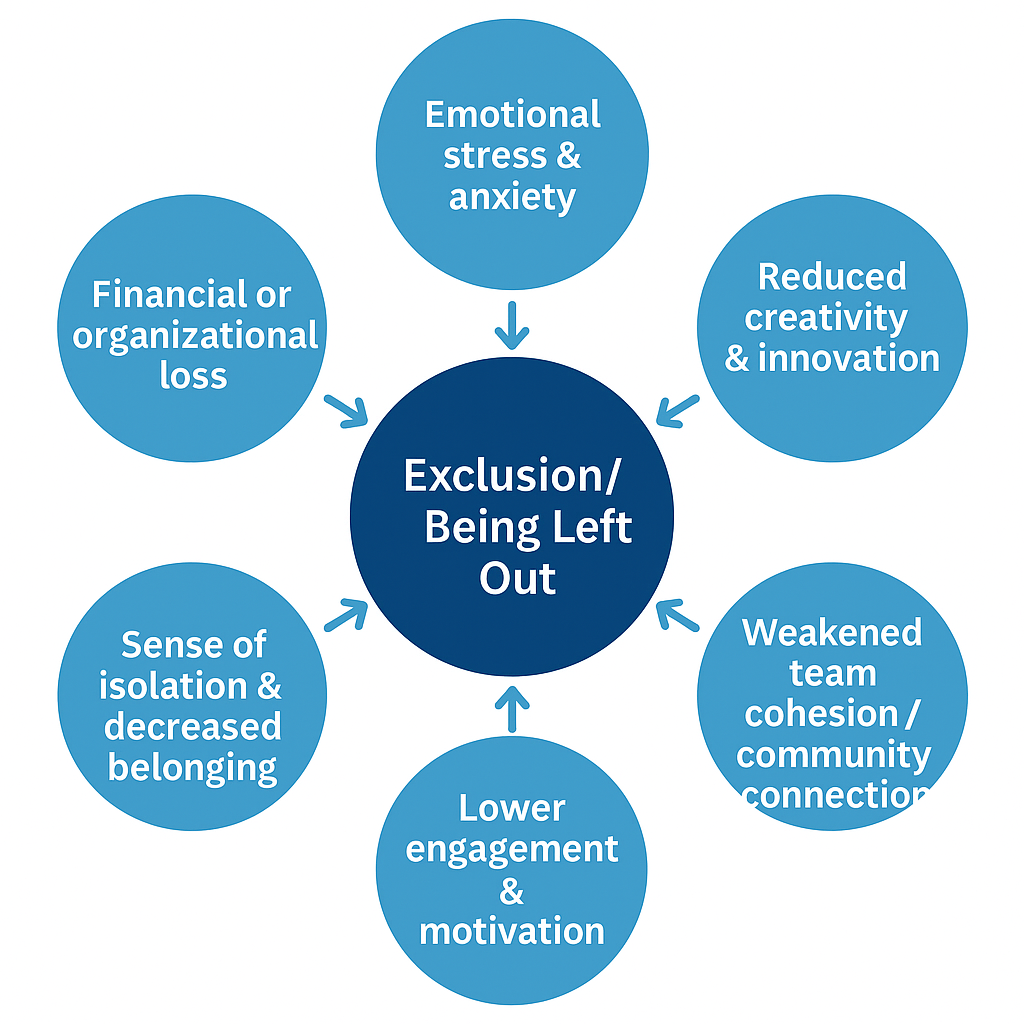The Silent Price of Exclusion
The silent price of exclusion is something we rarely talk about, about, yet it affects how safe we feel — at work, and beyond.
There’s a mentality I often see: friendly smiles.
Polite, yes. Helpful, sometimes. But honest? Not always.
Many who move somewhere new — or even join a new team — feel that same invisible wall: “They’re nice, but…”
Chances are, you’ve felt it too — that quiet distance that keeps you from truly belonging.
And then I see what I often see in workplaces: how easily people are excluded, and how deeply it affects them.
Because exclusion is rejection — and rejection can take the form of polite distance, silent decisions, or unspoken words.
The Silent Price of Exclusion at Work.
When we talk about stress, we often think of workloads, deadlines, pressure.
But rarely of respect — for who the other person is, the perspectives they carry, and the ways they can stand apart from the majority.
Think about it: how often do we notice or honor these differences? How often do we stop to reflect on whether our own actions — or in actions — contribute to someone feeling left out?
Yet the body reacts just as strongly to social stress: the feeling of not belonging, of being outside invisible circles. Research shows that workplace ostracism is strongly linked with negative outcomes like lower well-being, decreased job satisfaction, and increased turnover intentions, reminding us that being left out isn’t just emotionally painful — it’s real and measurable. (source: The Relationship Between Workplace Ostracism and Organizational Dehumanization)
It’s subtle, but it shapes how safe people feel, how much they dare to contribute, and how long they stay.
Maybe you’ve seen it happen in your own team or community — an idea not shared, a voice kept quiet, a person quietly sidelined.
The silent cost of being left out isn’t just emotional.
It’s creative, relational, and financial.
Companies lose innovation. Communities lose connection.
And individuals lose a sense of belonging — the one thing we all need to stay well, engaged, and human.
Maybe inclusion isn’t about big words or new policies.
Maybe it starts with something simpler — the courage to be honest, the curiosity to let someone in, and the awareness to reflect on how our own behavior affects others.
Because sometimes, what looks like “just the way things are” is exactly what needs to change – and that’s where we start to reduce the silent price of exclusion.”
It starts with each of us noticing — and choosing differently.
I wrote about this feeling of recognition in my earlier article, From Stuck to Seen: The Power of Shifting Together
